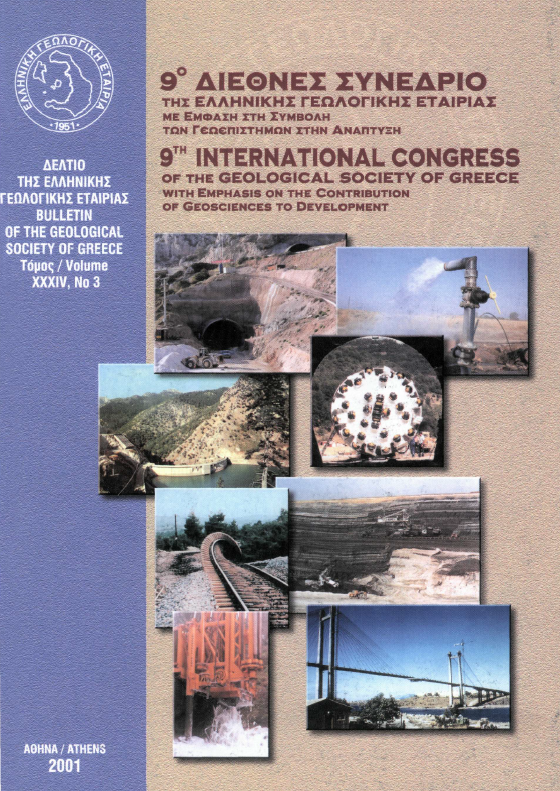Indications for ultra-high pressure metamorphism of amphibolite xenolith in the Arnea granite

Abstract
In this paper an amphibolite rock presented as xenolith into the Arnea granite close to Marathousa village has been examined. In particular, the xenolith is exposed into the aplitic granite portion of the Arnea granite at its contact with the Serbomacedonian massif. Microscopic studies and chemical analyses carried out in samples from the amphibolite xenolith and its contact zone with the aplitic granite has indicated the existence of tetrahedral and octahedral forms of "graphitized diamonds". This denotes that the amphibolite xenolith is the retrograde metamorphic rock of a previously, possibly eclogite rock, which the later was metamorphosed at least under ultra-high pressure metamorphic conditions. Mineral parageneses of the xenolith, as well as the use of the geobarothermometric methods have shown that the xenolith has been subjected to at least three metamorphic events. The first was attributed to a ultra-high pressure of at least 30-35kb, the second to a P-T conditions corresponding to 15kb and about 670 °C and the latest to 8.4 ± 1,2 kb and 380 ± 34 °C. The latest greenschist metamorphic event is the only metamorphic one imprinted in the Arnea granite. Taking account the latest dating of the Arnea granite crystallization age in Late Triassic (215 ± 1,8 Ma), we suggest that the examined xenolith was probably a part of a sedimentary crustal rock that metamorphosed to ultra-high pressure conditions associated with a deep subduction zone in the Late Paleozoic times. During Triassic it was retrograde metamorphosed to the amphibolitic metamorphic phase probably associated with a general uplifting of the area and finally it ascended as xenolith along with the Arnea granite to more shallow depths where they both subjected to the greenschist metamorphic event.
Article Details
- How to Cite
-
ΙΩΑΝΝΙΔΗΣ Ν., & ΣΚΛΑΒΟΥΝΟΣ Σ. (2001). Indications for ultra-high pressure metamorphism of amphibolite xenolith in the Arnea granite. Bulletin of the Geological Society of Greece, 34(3), 893–900. https://doi.org/10.12681/bgsg.17110
- Section
- Petrology

This work is licensed under a Creative Commons Attribution-NonCommercial 4.0 International License.
Authors who publish with this journal agree to the following terms:
Authors retain copyright and grant the journal right of first publication with the work simultaneously licensed under a Creative Commons Attribution Non-Commercial License that allows others to share the work with an acknowledgement of the work's authorship and initial publication in this journal.
Authors are able to enter into separate, additional contractual arrangements for the non-exclusive distribution of the journal's published version of the work (e.g. post it to an institutional repository or publish it in a book), with an acknowledgement of its initial publication in this journal. Authors are permitted and encouraged to post their work online (preferably in institutional repositories or on their website) prior to and during the submission process, as it can lead to productive exchanges, as well as earlier and greater citation of published work.


